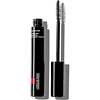What's inside
What's inside
 Key Ingredients
Key Ingredients

 Benefits
Benefits

 Concerns
Concerns

 Ingredients Side-by-side
Ingredients Side-by-side

Water
Skin ConditioningAcrylates Copolymer
Glyceryl Stearate Se
EmulsifyingGlycerin
HumectantAlcohol Denat.
AntimicrobialPvp
Emulsion StabilisingCI 77491
Cosmetic ColorantCopernicia Cerifera Wax
Vp/Eicosene Copolymer
CI 77007
Cosmetic ColorantTalc
AbrasiveCI 77499
Cosmetic ColorantStearic Acid
CleansingArgania Spinosa Kernel Oil
EmollientRicinus Communis Seed Oil
MaskingLepidium Meyenii Root Extract
Skin ConditioningMica
Cosmetic ColorantMethylglucamine
Tromethamine
BufferingGlyceryl Caprylate
EmollientTriethoxycaprylylsilane
Ethylhexylglycerin
Skin ConditioningMaltodextrin
AbsorbentXanthan Gum
EmulsifyingDisodium EDTA
Phenoxyethanol
PreservativeSodium Dehydroacetate
PreservativeCI 77492
Cosmetic ColorantWater, Acrylates Copolymer, Glyceryl Stearate Se, Glycerin, Alcohol Denat., Pvp, CI 77491, Copernicia Cerifera Wax, Vp/Eicosene Copolymer, CI 77007, Talc, CI 77499, Stearic Acid, Argania Spinosa Kernel Oil, Ricinus Communis Seed Oil, Lepidium Meyenii Root Extract, Mica, Methylglucamine, Tromethamine, Glyceryl Caprylate, Triethoxycaprylylsilane, Ethylhexylglycerin, Maltodextrin, Xanthan Gum, Disodium EDTA, Phenoxyethanol, Sodium Dehydroacetate, CI 77492
Water
Skin ConditioningParaffin
PerfumingCopernicia Cerifera Cera
EmollientSteareth-20
CleansingCera Alba
EmollientAcacia Senegal Gum
MaskingAlcohol Denat.
AntimicrobialSteareth-2
EmulsifyingPotassium Cetyl Phosphate
EmulsifyingCetyl Alcohol
EmollientHydroxyethylcellulose
Emulsion StabilisingMadecassoside
AntioxidantSodium Polymethacrylate
Emulsion StabilisingSodium Dehydroacetate
PreservativeSodium Hyaluronate
HumectantSodium Chloride
MaskingSodium Bicarbonate
AbrasivePhenethyl Alcohol
MaskingPEG/PPG-17/18 Dimethicone
EmulsifyingArginine
MaskingPolysorbate 21
EmulsifyingPoloxamer 188
EmulsifyingPolyquaternium-10
Silica
AbrasiveSimethicone
EmollientPentylene Glycol
Skin ConditioningPanthenol
Skin Conditioning2-Oleamido-1,3-Octadecanediol
Skin ConditioningCaprylyl Glycol
EmollientDisodium EDTA
Methylsilanol/Silicate Crosspolymer
Skin ConditioningCitric Acid
BufferingPotassium Phosphate
BufferingPotassium Chloride
CI 77491
Cosmetic ColorantCI 77492
Cosmetic ColorantCI 77499
Cosmetic ColorantCI 75470
Cosmetic ColorantCI 77007
Cosmetic ColorantCI 77891
Cosmetic ColorantCI 77510
Cosmetic ColorantMica
Cosmetic ColorantWater, Paraffin, Copernicia Cerifera Cera, Steareth-20, Cera Alba, Acacia Senegal Gum, Alcohol Denat., Steareth-2, Potassium Cetyl Phosphate, Cetyl Alcohol, Hydroxyethylcellulose, Madecassoside, Sodium Polymethacrylate, Sodium Dehydroacetate, Sodium Hyaluronate, Sodium Chloride, Sodium Bicarbonate, Phenethyl Alcohol, PEG/PPG-17/18 Dimethicone, Arginine, Polysorbate 21, Poloxamer 188, Polyquaternium-10, Silica, Simethicone, Pentylene Glycol, Panthenol, 2-Oleamido-1,3-Octadecanediol, Caprylyl Glycol, Disodium EDTA, Methylsilanol/Silicate Crosspolymer, Citric Acid, Potassium Phosphate, Potassium Chloride, CI 77491, CI 77492, CI 77499, CI 75470, CI 77007, CI 77891, CI 77510, Mica
Ingredients Explained
These ingredients are found in both products.
Ingredients higher up in an ingredient list are typically present in a larger amount.
Alcohol Denat. is an alcohol with a denaturant property. It is created by mixing ethanol with other additives.
This ingredient gets a bad rep because it is irritating and drying - mostly due to its astringent property. Astringents draw out natural oils in tissue, constricting pores and leaving your skin dried out.
However, alcohol denat. is not all that bad.
Due to its low molecular weight, alcohol denat. tends to evaporate quickly. One study on pig skin found half of applied alcohol evaporated in 10 seconds and less than 3% stayed on skin.
This also helps other ingredients become better absorbed upon application.
Studies are conflicted about whether this ingredient causes skin dehydration. One study from 2005 found adding emollients to propanol-based sanitizer decreased skin dryness and irritation. Another study found irritation only occurs if your skin is already damaged.
Small amounts of alcohol are generally tolerated by oily skin or people who live in humid environments.
The rule of thumb is if this alcohol is near the end of an ingredients list, it will probably not affect your skin much.
Also...
This ingredient has antimicrobial and solvent properties.
The antimicrobial property helps preserve products and increase their shelf life. As a solvent, it helps dissolve other ingredients.
Other types of astringent alcohols include:
Learn more about Alcohol Denat.This pigment is called Ultramarine blue lazurite. It gives a saturated blue color, but can be used to create other colors as well.
According to the manufacturer, it is usually made from kaolin, sodium sulfate, sodium carbonate, sulfur, and charcoal.
Ci 77491 is also hydrated iron III oxide. It's sole purpose is to give a red/pink hue to products.
Iron III oxides are classified as inorganic chemicals for coloring.
Synthetically created Ci 77491 is considered safer than those naturally found. This is because the synthetically created version may contain less impurities. Iron oxides are generally non-toxic and non-allergenic.
Learn more about CI 77491Ci 77492 is also hydrated iron III oxide. It's sole purpose is to give a yellow hue to products.
Iron III oxides are classified as inorganic chemicals for coloring.
Synthetically created Ci 77492 is considered safer than those naturally found. This is because the synthetically created version may contain less impurities. Iron oxides are generally non-toxic and non-allergenic.
Learn more about CI 77492Ci 77499 is also hydrated iron III oxide. It is created from mixing red and black iron oxides. This helps give shades of darkness to a product.
Iron III oxides are classified as inorganic chemicals for coloring.
Disodium EDTA plays a role in making products more stable by aiding other preservatives.
It is a chelating agent, meaning it neutralizes metal ions that may be found in a product.
Disodium EDTA is a salt of edetic acid and is found to be safe in cosmetic ingredients.
Learn more about Disodium EDTAMica is a naturally occurring mineral used to add shimmer and color in cosmetics. It can also help improve the texture of a product or give it an opaque, white/silver color.
Serecite is the name for very fine but ragged grains of mica.
This ingredient is often coated with metal oxides like titanium dioxide. Trace amounts of heavy metals may be found in mica, but these metals are not harmful in our personal products.
Mica has been used since prehistoric times throughout the world. Ancient Egyptian, Indian, Greek, Roman, Aztec, and Chinese civilizations have used mica.
Learn more about MicaThis ingredient is a preservative with antimicrobial properties. It is the sodium salt of dehydroacetic acid.
It is especially effective at preventing bacterial and fungal growth in low concentrations.
Water. It's the most common cosmetic ingredient of all. You'll usually see it at the top of ingredient lists, meaning that it makes up the largest part of the product.
So why is it so popular? Water most often acts as a solvent - this means that it helps dissolve other ingredients into the formulation.
You'll also recognize water as that liquid we all need to stay alive. If you see this, drink a glass of water. Stay hydrated!
Learn more about Water